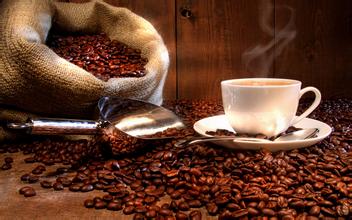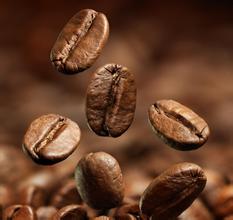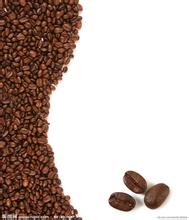How many kinds of coffee beans are there?
Colombia
Coffee beans are of neat quality and can be called the standard beans in coffee beans. The bean shape is too large, with light green, has a special thick flavor, and is widely favored by people for its rich and unique aroma. Its taste is sour with sweet taste and low bitterness. Generally speaking, medium-deep roasting will make the taste more personalized, not only as a single drink, but also as a mixed coffee.
Brazil
Coffee is medium-fragrant, sour and mellow, with a light bitterness and is famous for its smooth taste. Among them, Santos Coffee is more famous. Mainly produced in the state of Sao Paulo, the variety is Arabica Bourbon, so it is also used to be called Bourbon Santos. It has good quality, smooth taste, moderate acidity and strong sweetness, so it is an indispensable raw material for mixed coffee.
Manning
Belongs to the Arabica variety, mainly produced in Java, Sumatra and Sulawi islands of Indonesia. Its particles are large, the bean quality is very hard, and the probability of defects in the planting process is high, so it needs to be selected manually after harvest. Therefore, Manning has become a controversial item. It has a rich and mellow taste, not astringent, not sour, mellow, bitter and high aroma, quite individual.
Mocha Coffee
At present, the coffee produced in Yemen is the best, followed by Ethiopia's mocha; mocha coffee belt smooth in the acid to strong acid, sweet, unique flavor, containing chocolate flavor; with the temperament of a lady, is a very characteristic pure coffee.
Italian Coffee
Generally brewing Italian coffee at home is made using a mocha pot invented in Italy, which also uses the principle of vapor pressure to quench coffee (another Watt's apprentice). The mocha pot can make the pressurized vapor pass directly through the coffee powder, allowing the steam to pass through the cell wall of the coffee powder (or Hook's apprentice), quenching out the inner essence of the coffee, so the brewed coffee has a strong aroma and strong bitter taste, and a thin layer of coffee oil appears on the surface of the coffee, which is the source of the attractive aroma of Italian coffee.
Charcoal Coffee
It is a kind of heavily roasted coffee, which tastes charred, bitter without acid, and coffee beans produce oil, so it is very suitable for steam pressurized coffee.
The origin of cappuccino Cappuccino
Viennese Fanz George Kolschitsky, the founder of Cafe Latte with Milk and Coffee, will talk about the origin of Cappuccino in this issue. Both drinks are made from coffee and milk, but cappuccino has a more knowledgeable origin and has always been the best material for the study of character changes in Europe and the United States.
The history of the word Cappuccino is enough to show that a word is often extended to other meanings because it looks like something, far beyond the original intention of the creator. It sounds complicated. Take a look at the following analysis.
The monks of the St. Franciscan Church (Capuchin), founded after 1525, all wore brown robes and pointed hats. When the St. Franciscan Church spread to Italy, the locals thought that the monks' clothes were very special, so they gave them the name Cappuccino. The Italian word refers to the loose robes and small pointed hats worn by monks, derived from the Italian word "headscarf" or Cappuccio.
However, Lao Yi loved coffee and found that when espresso, milk and milk foam were mixed, the color was like the dark brown robe worn by monks, so he came up with a drink with coffee and sharp milk bubbles, which was named Cappuccino. The word was first used in English in 1948, when a report in San Francisco first introduced cappuccino beverages, and it was not until 1990 that it became a familiar coffee drink. It should be possible to say that the word Cappuccino coffee comes from the St. Franciscan Church (Capuchin) and the Italian headscarf (Cappucio). It is believed that the original word makers of Cappuccino never dreamed that the monks' robes would eventually become the name of a coffee drink.
Cappuccino is also related to the name of a monkey.
There is a small monkey in Africa with a black cone-shaped hair on its head, much like a pointed hat on a St. Franciscan robe, hence the name Capuchin, which was first used by the British in 1785. The word Capuchin has generated coffee drink names and monkey names hundreds of years later, which has always been an interesting story for literati.
Caffeine taste
The taste of coffee generally includes three aspects: smell, taste and taste.
There are 18 kinds of odors: animal, ash, coke, chemicals, chocolate, caramel, roasted sweet potato, earth, flowers, fruit, grass and vegetables, almonds, sour rot, rubber, spicy, tobacco, wine, wood.
The most basic flavors are sour, bitter and sweet. Sour taste is a basic taste of coffee, caused by organic acid, Taiwan citric acid, malic acid and so on. The second is the bitterness in the coffee taste of caffeine, quinine and this alkaloid, which is another basic taste of coffee, and good coffee has a certain degree of bitterness. The sucrose and fructose in coffee lead to the flavor of coffee, which is also an aspect of describing the flavor of coffee.
The third aspect of commenting on coffee is its taste. First of all, there is a strong feeling, after drinking coffee, some are very strong, the whole mouth has a sense of fullness, and the watch will disappear for a long time, this is a kind of excellent coffee. Some coffee tastes like a cup of boiled water, light, without any feeling, losing the rich fragrance of coffee. Another taste of coffee is astringency, which is a particularly dry aftertaste, which people don't like.
Caffeine reason and preparation
Once upon a time, a shepherd complained to the monk that his goat stayed up all night and behaved abnormally. The monk was also curious about this and went with his companions to find out. As a result, they were surprised to find a kind of irrigated fruit. He boiled the fruit with water and found that drinking the juice did keep people awake. As a result, there is a legend in the 1001 Nights about the discovery of coffee in Yemen.
Make
Filter method: add the coffee powder to the filter bag or filter paper, slowly pour fresh boiled water until the coffee is drenched, and then pour all the water into the pot for two to three times to drink.
ESPRESSO method: it needs to be made with the help of Italian coffee machine. The Italian coffee maker has enough pressure to force the hot water through the very fine and squeezed coffee powder to absorb the strongest taste of the coffee and then drip it into the cup below.
Automatic infiltration method: pour fresh cold water into the water tank of the electric coffee pot, then add the right amount of coffee powder to the filter, turn on the power, and wait for all the water to be dripped.
Share

Important Notice :
前街咖啡 FrontStreet Coffee has moved to new addredd:
FrontStreet Coffee Address: 315,Donghua East Road,GuangZhou
Tel:020 38364473
- Prev

A series of introductions to the flavor and types of coffee
Mellow [aromatic alcohol] is an adjective for coffee with low to medium acidity and good balance. Mild [mild] indicates that some kind of coffee has a harmonious and delicate flavor. Latin American premium coffee grown on the plateau is usually described as mild in texture. In addition, it is also a coffee term used to refer to all plateau coffee except those produced in Brazil. Soft [soft] shape
- Next

Introduction of Panamanian Coffee Manor Jade Manor
Boquete is a high-altitude volcanic area, because the Baru Volcano volcano brings quite fertile soil, towering terrain, cold and humid air, different sunshine, abundant rainfall, and rivers flow through it, creating high-quality Panamanian boutique coffee. This batch of coffee, which is grown in the same area as the Jade Manor, happens to be located in continuous valleys and ridges, so
Related
- Does Rose Summer choose Blue, Green or Red? Detailed explanation of Rose Summer Coffee plots and Classification in Panamanian Jade Manor
- What is the difference between the origin, producing area, processing plant, cooperative and manor of coffee beans?
- How fine does the espresso powder fit? how to grind the espresso?
- Sca coffee roasting degree color card coffee roasting degree 8 roasting color values what do you mean?
- The practice of lattes: how to make lattes at home
- Introduction to Indonesian Fine Coffee beans-- Java Coffee producing area of Indonesian Arabica Coffee
- How much will the flavor of light and medium roasted rose summer be expressed? What baking level is rose summer suitable for?
- Introduction to the characteristics of washing, sun-drying or wet-planing coffee commonly used in Mantenin, Indonesia
- Price characteristics of Arabica Coffee Bean Starbucks introduction to Manning Coffee Bean Taste producing area Variety Manor
- What is the authentic Yega flavor? What are the flavor characteristics of the really excellent Yejasuffi coffee beans?

